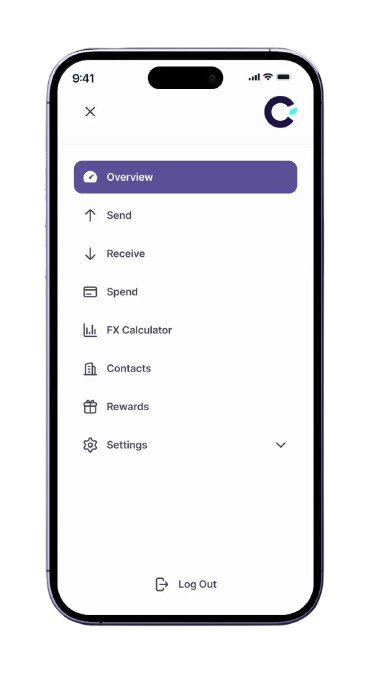公司
.jpg)
管理多货币 B2B 支付 很快就会变得复杂。在平衡所涉及的多种货币、不同的法规、一长串的工具和通常严格的时间表之间,企业往往会陷入困境,他们的工作流程也会变得疲劳。
想象一下,必须用美元、欧元和英镑向供应商付款 从你在肯尼亚的基地出发。您使用当地银行进行某些付款,使用汇款应用程序进行其他付款,使用Excel表格来跟踪所有付款。这很混乱,很危险,太累了。而且你知道那个食谱是什么意思吗?职业倦怠和运营拖累。
在本文中,我们将引导您了解如何优化多币种支付和简化您的工作流程。
多币种支付仅涉及以不同货币发送、接收和处理资金的能力,而不是仅限于单一的(通常是当地货币)。
这使企业能够方便地以首选货币为合作伙伴提供跨境服务,并有可能规避国际交易的不利之处——高成本、延迟等
对于许多拥有国际客户的企业而言,汇款或收款涉及以不同的货币开立银行账户,并确保这些账户始终有足够的资金来支付计划和紧急费用。
如果这些企业在不同的国家设有分支机构,他们通常必须向这些分支机构汇款,以支付当地费用(例如税收、员工工资或日常开支),全部以该国的当地货币支出。
从表面上看,这些设置看起来像是智能设置:为不同的需求开设单独的帐户。但实际上,它很快就会形成一个由工具、转换和流程组成的复杂网络,其成本超过节省的费用,尤其是在运营开始扩大以及支付量和复杂性增加的情况下。
以下是企业在以传统方式管理多币种B2B支付时面临的一些最常见的问题:
1。多种工具,分散的数据
许多财务团队经常管理跨多个平台的付款。一个用于外汇兑换,另一个用于汇款,最常见的是用于跟踪的 Excel 表格 现金流。这个系统的结果?零散的数据无处不在,不同步,为报告和平衡账本进行整理非常乏味。
2。外汇风险敞口
当企业进行国际交易时,由于外汇汇率的波动,可能会造成财务损失。因此,当您收到付款或想要汇款时,如果您等待太久才转换资金,则可能会在没有意识到的情况下蒙受损失。
Cedar Money 通过以下方法缓解了这个 费率提醒, 这样可以确保在达到您设定的外汇目标时立即收到通知。
3.和解问题
由于汇率和费用,入账和汇出的款项可能会有所不同。这些不同的金额可能使人难以分辨支付了哪些款项、向谁支付了款项以及何时支付,从而导致财务账目和对账问题不一致。
4。手动流程等于付款延迟
在手动输入数据、追踪批准和跟进客户或供应商之间,团队不必要地浪费了本来可以花在更具生产力的工作上的时间。这不仅消耗了本来可以更好地利用的业务资源和人力,而且还会减缓付款速度并为错误留出空间。
任何企业要想蓬勃发展,都需要建立能够保持车轮平稳运行的结构和系统。而且,当系统出现问题时,企业会为此付出沉重的代价。以下是混乱的支付工作流程如何影响您的业务:
1。错过了增长机会
缓慢的付款可能会延迟您获得优惠价格或进行重要的企业采购。这可能会使你失去以合理的价格购买库存的机会,或者合作伙伴可能会决定选择更可靠的供应商。
2。供应商流失率高
经营企业需要极大的信任;你相信你的供应商会按照他们所说的条件交付他们所说的货物。而且他们相信你会在你说的时候支付货款。因此,当你的供应商没有按时(或适当的金额)获得报酬时,你就会失去他们的信任,他们可能会选择停止与你的合作。没有你的供应商,就没有产品,没有产品,就没有生意。
3.操作阻力
您的财务和运营团队没有专注于战略或制定业务增长计划,而是将所有时间都花在解决付款问题上。这不仅会浪费您扩大和/或改进的潜在业务机会,而且还会花费您的资金。怎么样?想一想:你向员工支付的技能是他们无法充分用于雇用他们的目的,因为他们的精力被浪费在薪酬问题上。
4。 隐性成本
没有什么比你看不到的那些成本更快的了:不良的外汇汇率、多笔银行手续费、滞纳金等。
1。整合您的平台
与其兼顾三到五个不同的平台,不如使用更少的工具来做更多的事情。例如,您使用可以处理外汇和付款并确保合规的单一支付解决方案怎么样?
2。尽你所能实现自动化
在大多数重要的方面,自动化胜过手动处理。所以,如果你能让它自动化,那就去做吧。设置自动批准、定期付款或提醒,以减少手动工作,进而减少人为错误的风险。
3.使用 API 进行扩展
不必费力地手动输入每笔交易,而是使用软件(通过 API)来连接您的系统并自动执行 B2B 支付流程。
4。实时跟踪 FX
千万不要错过优惠的汇率。使用能显示实时汇率的工具,并可以 通知你费率 你想在那里进行交易。
5。设置明确的角色和权限
确保您的团队清楚自己的职责,并知道谁批准了什么。这样可以避免混乱,进而避免不必要的延迟。
借助 Cedar Money 的多用户账户访问权限,您的团队可以保持协调、合规和安全。
在管理跨币种付款时,对吧 付款解决方案 可以为您的团队节省工作时间,并帮助您的企业避免代价高昂的错误。
但是,并非所有解决方案都是一样的。
为了真正简化您的多币种B2B支付工作流程,您选择的平台应具有一些不可谈判的内容,不仅是物有所值的产品,还包括消除摩擦,提高知名度并支持业务增长的实际功能。
这里有一份清单,你可以用来评估你当前的设置(或你正在考虑的任何提供商)是否在帮助你转移资金 高效、安全、 和 大规模地:
.jpg)
专业提示: 雪松钱 勾选每个方框以及更多。从高达3000万美元的大额支付支持到覆盖190多个国家的全球覆盖范围以及 180 美元的推荐计划,我们的平台是为现代B2B金融的规模和复杂性而构建的。
有了 Cedar Money,你不只是汇款。您正在构建一个智能、可扩展的工作流程,整个团队都可以信赖。
既然您已经了解了高效的多币种B2B支付流程应该是什么样子,是时候放大自己的系统了。
首先问:
提示:规划当前的工作流程,从收到发票到确认付款。这将帮助您确定瓶颈、冗余或可以自动化的手动流程。
你也可以 预订快速聊天 与 Cedar Money 专家联系,看看我们如何帮助您改善当前的设置。
您如何管理付款既可以推动业务增长,也可以减缓您的步伐。
笨拙的流程、分散的工具和延迟的交易不仅会给您的财务团队带来麻烦,还会影响您的供应商关系, 现金流, 以及你的扩张能力。
但不一定是这样。
使用正确的工具,您可以快速、灵活且无摩擦地跨货币、跨国家和团队进行B2B支付。
如果您准备简化国际支付和获得报酬的方式,Cedar Money可以为您提供帮助。 今天就开始吧!

